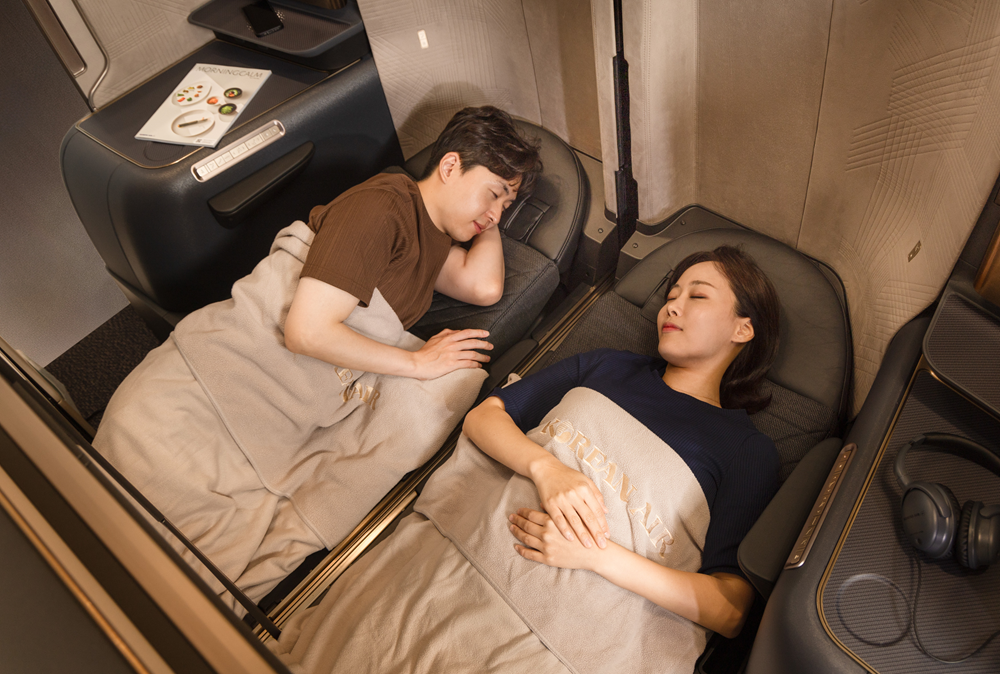United eco-flight showcases airline responses to climate change
05 June, 2019
3 min read
By joining our newsletter, you agree to our Privacy Policy


As airlines worry about increased attacks on flying from environmental fringe groups, United Airlines has put together a flight demonstrating the multiple ways the aviation industry is tackling climate change.
United celebrated World Environment Day with what it touted as the most eco-friendly commercial flight in the history of aviation.
The “flight for the Planet” is being used key ways of flying as sustainably as possible using current technology, resources and fuel-saving procedures.
It pulled all the sustainability levers on a single flight, combining biofuel, zero cabin waste efforts, carbon offsetting and operational efficiencies.
It is part of a pledge by the airline to reduce its carbon footprint by 50 percent by 2050, reducing its CO2 emissions by 21 million tonnes annually.
The flight was from its hometown hub of Chicago O’Hare to its “eco-hub” in Los Angeles where it has been blending sustainable aviation fuel with kerosene to power all flights since 2016.
The flight uses a 30/70 blend of low-carbon, sustainable aviation fuel provided by Boston-based World Energy.
When used by itself, the biofuel reduces greenhouse gases by 60 percent on a lifecycle basis and United recently renewed its contract with World Energy to take 10 million gallons of SAF over the next two years.
READ: Airlines expand global connectivity
It was the first airline globally to use sustainable aviation biofuel on a continuous basis and the only airline in the United States to currently do so.
The reduction of waste going to landfill is another area to which a number of leading airlines are paying close attention.
In the economy cabin, United is swapping traditional snack options with a complimentary plated service featuring fully recyclable or compostable serviceware and tested an industry-first, recyclable-paper, hot beverage cup.
It continues to use reusable service ware in premium cabins and is swapping plastic lids for beeswax food wrappers.
It is also removing the paper wrapping from silverware roll-ups and has already replaced non-recyclable stirring sticks and cocktail picks with bamboo products on aircraft systemwide.
United also allows consumers to voluntarily offset their CO2 emissions— a move that has met with limited uptake on airlines globally — through a new partner, Conservation International.
On the operational side, United has made significant investments in updating its fleet to more fuel-efficient aircraft.
It used a Boeing 737-900ER to operate the flight, presumably because the airline’s even more efficient 737 MAX aircraft are currently grounded because of the Boeing crisis.
Even so, the airline said the -900ER could carry a passenger 77 miles on a single gallon of fuel.
It also pointed to the fact that 40 percent of its eligible ground service equipment (GSE) is electric-powered, with more than 70 percent of the airline's ground operation at its Los Angeles eco-hub utilizing electric GSE equipment.
The airline is also the first to use ITW GSE 7400 electric ground power units that drastically reduce workplace noise pollution and cut carbon emissions by 90 percent.
Next Article
2 min read
Qantas triples profit but misses mark

Get the latest news and updates straight to your inbox
No spam, no hassle, no fuss, just airline news direct to you.
By joining our newsletter, you agree to our Privacy Policy
Find us on social media
Comments
No comments yet, be the first to write one.
